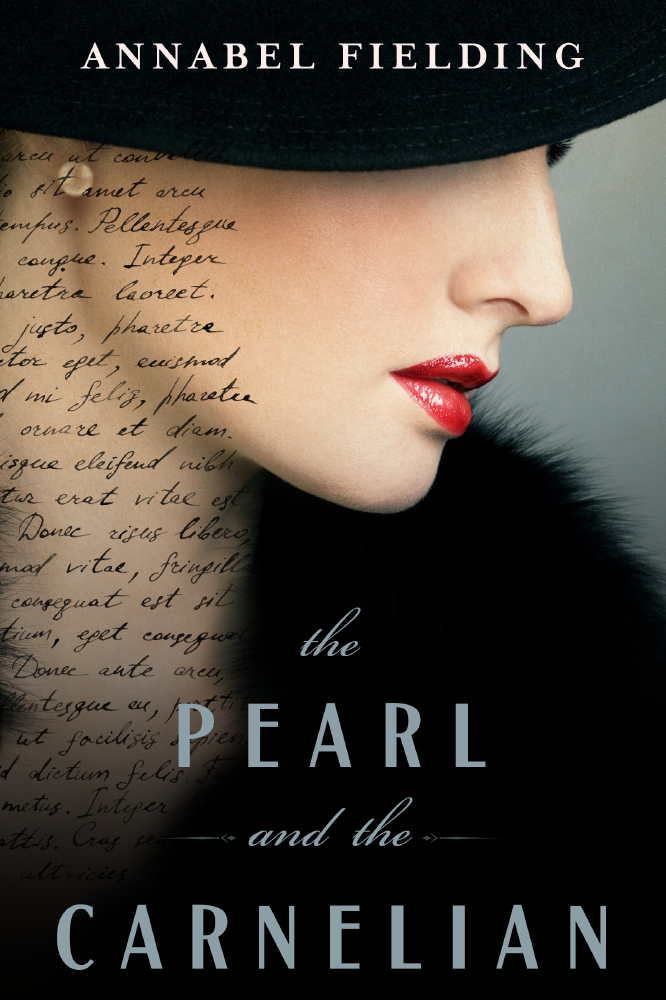By Annabel Fielding, author of historical novel The Pearl and the Carnelian

The Pearl and the Carnelian
The interwar years of the 1930s was marked by tumultuous political and social upheavals that more than warrant its description as the “Devil’s decade”.
It was a time when Hitler and the Nazis were on the ascendency in Germany, while fascism was taking root in Europe.
The relationships between the UK and the fascist regimes of the continent during this period are often imagined in terms of inherent adversity: a reassuring tale of the sensible, egalitarian Brits inevitably triumphing over the violent and reactionary societies abroad.
However, over the course of research for my historical novel, The Pearl and the Carnelian, I had to delve into far murkier waters and discover some unsavoury truths.
One figure who can give us a glimpse of this darker side of the British history is Princess Stephanie von Hohenlohe – a noblewoman, an adventuress, a diplomat… and a notorious Nazi sympathizer.
One of her most fruitful partnerships was with Lord Rothermere, an esteemed British peer and then owner of national newspaper the Daily Mail.
Rothermere had always been notoriously conservative. However, in the 1930s his sympathies – and activities – acquired a dangerous radical edge as he began a well-publicised overture to the new totalitarian regimes of Italy and Germany.
Many people have heard of his infamous “Hurrah for the Blackshirts!” headline, referring to supporters of the British Union of Fascists led by Oswald Mosley, himself an aristocrat.
Few, however, know that his connections to the far-Right movements, both overseas and at home, went much further than this. In 1933, Rothermere started his clandestine correspondence with Hitler – and Stephanie became his exceptionally high-ranking courier.
One of the first gifts Rothermere entrusted her to carry was his own portrait photograph mounted in a solid gold frame. The frame was made by Cartier of Paris and was worth more than £50,000 at today’s prices. On the reverse of the frame was a reprint of the Daily Mail editorial hailing the ‘New Germany’.
Such sentiments, of course, look shocking and bizarre to us – however, they were far more common in the interwar British society than we would often care to admit.
The list of Nazi sympathizers included plenty of surnames that we are more used to seeing in society columns: the Duke of Westminster, the richest landowner in Britain, joined The Link, a radical pro-Nazi organization, as late as 1939. A joke at the time was that one of his motives must have been to prevent Hitler from dropping bombs on London, because he owned so much of it!
Even the Prince of Wales himself, the future Edward the 8th, frequently spoke in favour of the “Anglo-German understanding”.
Often this support stemmed from fear. The rich and powerful feared the bogeyman of Communism and the fascist regimes on the continent, as well as Oswald Mosley's Blackshirts at home, seemed to promise a shield against the much-discussed Red threat.
At the same time, more prosaic home-grown problems were cause for alarm. Scarcely a year passed without another desperate hunger march setting out from the destitute, jobless towns of the North. Fascism offered simple solutions; and simple solutions often sound extraordinarily seductive.
Over the years of the Great War, the seemingly everlasting ancient monarchies of Europe proved to be about as stable as cardboard props, concealing long-rotten structures. Even in Britain the signs of a painful decline were only too apparent. The writing was on the wall: the old ways worked no longer.
The disillusionment with the traditional structures of power reached such a point that it was easy to believe that anyone who does things differently would necessarily do things better. Scarily, similar thinking is once again emerging in the UK, as shown by the Brexit outcome.
It was even easier to believe in the might and talent of the bold new regimes. To believe that they could solve the problems the old establishment stumbled around for decades, that they could lead Europe – and Britain with it – into the new age of peace and prosperity.
Stephanie herself ended up appearing in my novel only as a cameo. However, the momentous processes that she was caught up in can be seen writ large in its landscape.
It comes down to the difficulty of recognizing the signs of tragedy when you are only in the first act, and the conundrum of choosing your side when all the options seem equally unsavoury.
The pain of seeing the war clouds looming on the horizon and knowing that the only question is “when”. And, of course, “whom”.
The Pearl and the Carnelian by Annabel Fielding is out now, priced £12.30 in paperback and £4.61 as an eBook. Visit www.historygeekintown.com/the-pearl-and-the-carnelian/

